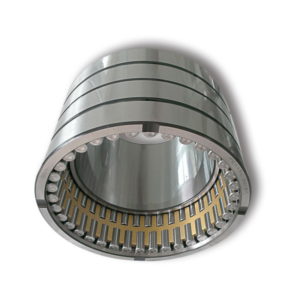Rolling mill bearing are designed to support heavy loads and operate under extreme conditions. However, misalignment can occur due to a variety of factors, which can cause a range of problems, such as reduced bearing life, increased vibration, and decreased performance. Here are some common causes of rolling mill bearing misalignment:
Improper installation
If the bearings are not installed correctly, this can cause misalignment. This can be caused by incorrect lubrication, incorrect torque on the mounting bolts, or other installation errors.
Shaft deflection
If the shaft is not straight or is subject to deflection due to heavy loads or other factors, this can cause misalignment of the bearings.

Thermal expansion
Rolling mill bearings operate under extreme temperatures, and thermal expansion can cause misalignment. This can be caused by temperature differences between the shaft and the housing or by uneven heating of the bearing components.
Wear and tear
Over time, rolling mill bearings can become worn or damaged, which can cause misalignment. This can be caused by normal wear and tear or by other factors, such as contamination or inadequate lubrication.
Improper maintenance
If the bearings are not properly maintained, this can cause misalignment. This can be caused by inadequate lubrication, failure to replace worn or damaged components, or other maintenance issues.
If you suspect that rolling mill bearing misalignment is affecting your equipment, it’s important to have the bearings inspected by a qualified technician. They can help diagnose the problem and recommend the best course of action, which may include realigning the bearings or replacing them with new ones. Regular maintenance and inspection can help prevent misalignment and ensure that your rolling mill bearings operate reliably and efficiently over their expected lifespan.